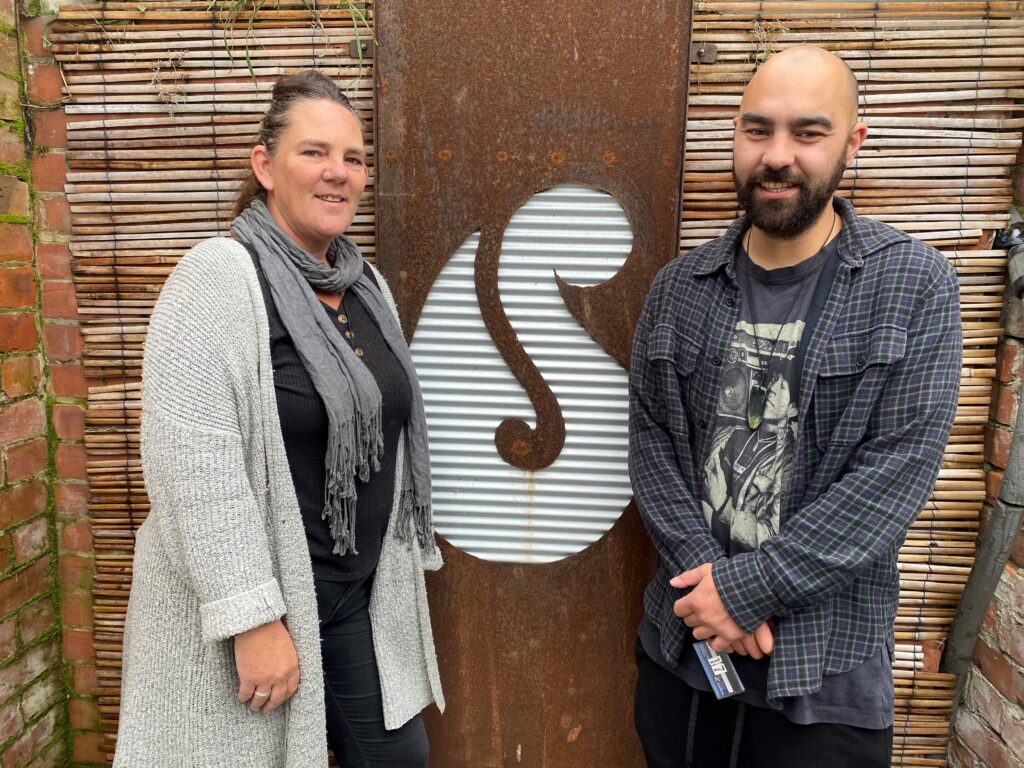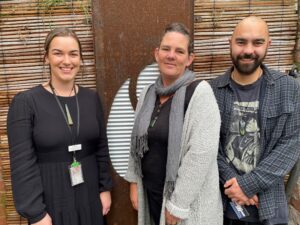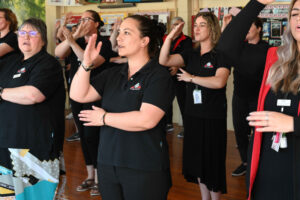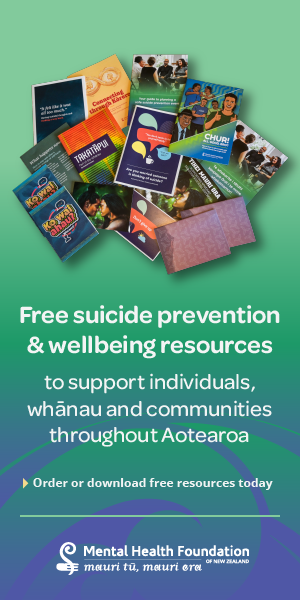Fortune trained as a nurse after having four of her own tamariki, and says her early, harmful experiences of health services as a Māori teen mother inspired her to pursue nursing.
“I was young, I was Māori, I had too many kids, all of those things that I knew the average doctor who had their life together would be looking at me with, and going hmm, yeah.
“I think services like this take those fears away and give people safe spaces.”

Fortune is a community RN at kaupapa Māori provider, Arowhenua Whānau Services, established by Te Rūnanga o Arowhenua in South Canterbury, in 2001. She splits her time between Tamariki Ora and primary health nursing.
Despite still paying off a $60,000 student loan seven years after graduating, she has no regrets.
“I think it is really rewarding, and it is a really good profession, especially community nursing. We get those huge connections with our community, that you don’t in the hospital and I think that’s really important.”
‘She said, ‘look, I will be a taxpayer in three years, if you just help me’, and she couldn’t get the help and she dropped out and . . . nine years on she’s still a solo mum on a benefit.’
In addition to providing a Tamariki Ora service and a drop-in clinic in Temuka, Arowhenua Whānau Services nurses travel to provide weekly health clinics in Timaru, Waimate and Twizel – a three-and-a-half hour return trip.
Demand for the service has grown since the COVID-19 pandemic, and Fortune said increases in living costs were likely behind it.
“We need more nurses, we need to encourage nurses to stay, we need to encourage nurses to train, we need to make it more accessible and easy.”
Fortune said the Government needed to invest more in support for nursing students, and especially Māori and Pacific students, to increase the workforce.
In a combined response to Kaitiaki, Te Whatu Ora chief nursing officer Dale Oliff and Te Aka Whai Ora chief nursing officer Nadine Gray said the agencies were working to grow and support the Māori health-care workforce, including those working in kaupapa Māori services.

Specific initiatives to achieve this included prioritising Māori and Pacific nurses in the “return to nursing support fund”, and the nurse practitioner training programme; pay parity funding for Māori, iwi and Pacific providers, and a greater investment in health scholarships for Māori ($3.27 million).
Fortune said while she managed to complete her training about seven years ago, with the support of her whānau, others she trained with were forced to drop out because they couldn’t afford the additional costs of transport, housing, and childcare.
A good friend, who was a solo mother, quit the course in her first year as she couldn’t afford the cost of petrol for the hour-long trip to the nearest training college. As her whānau provided child support, moving closer to the training provider wasn’t possible – and would have meant paying much more in rent.
Fortune says her friend was turned down for financial support by the Ministry of Social Development.

“She said, ‘look, I will be a taxpayer in three years, if you just help me’, and she couldn’t get the help and she dropped out and . . . nine years on she’s still a solo mum on a benefit. And she would have made an absolutely fantastic nurse.”
The proportion of Māori nurses, at 7 per cent of the total nursing workforce, has remained relatively low when compared to the total Māori population – estimated to be 17.4 per cent by Stats NZ in June 2022.
‘I think services like this take those fears away and give people safe spaces.’
Pacific nurses account for about 3.9 per cent of the total nursing workforce, while people of Pacific ethnicity make up about 8 per cent of the population.
Māori and Pacific people have a much higher burden of disease and ill-health, on average, compared to non-Māori.

A recent report for the Human Rights Commission describes the “devastating” impact of colonisation and racism on the health and well-being of Māori, due to the “undermining of rangatiratanga (self-determination), dispossession of land, suppression of te reo Māori, and dismantling of iwi, hapū and whānau”.
This week children’s medical research charity Cure Kids released a report which found Māori, Pasifika, and children living in poverty were disproportionately affected by respiratory conditions, skin infections, rheumatic diseases and mental health conditions – many of which are preventable. The report called for deficits in accessible health care to be addressed urgently.



